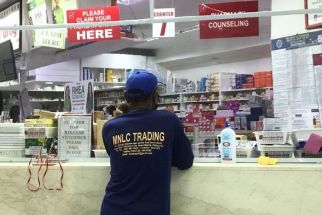Testing of toys for harmful chemicals sought
MANILA, Philippines - With the onset of the “ber” months, an environmental watchdog has called on concerned authorities to test toys for harmful chemicals to ensure that only safe toys are offered for sale in the build-up towards Christmas gift giving.
EcoWaste Coalition, a network campaigning for children’s health and safety from toxic chemicals, made the plea as the countdown to Christmas begins.
“To make the holidays merry and safe, especially for kids, we ask the government to guarantee that only truly non-toxic toys are placed on store shelves and sold to consumers,” said Roy Alvarez, president of EcoWaste Coalition.
“Over the next few months, stores will be stocking up heaps of alluring toys in anticipation of the increased demand during the season of gift-giving,” he noted.
“We owe it to the Filipino children that toys laced with chemicals linked to mental retardation, brain damage, behavioral disorders and the like are strictly banned and kept out of children’s hands,” he added.
The group recently went “shop browsing” in Divisoria, which many consider a bargain hunters’ paradise for toys and other consumer products.
The recent toxic toys scare in Singapore prompted the EcoWaste Coalition’s AlertToxic Patrol to visit the popular 168 Mall, Divisoria Mall, New Divisoria Center and other toy stores in the vicinity.
“We’re amazed to see that toy vendors are enjoying a brisk sale ahead of the Christmas shopping spree. At the same time, we’re upset to see many toys without adequate labels that could guide consumers on whether these toys are suitable and pose no potential health and safety risks to kids,” Manny Calonzo said.
The group said they saw two of the toys that failed chemical toxicological tests commissioned by a consumer group in Singapore.
Last Aug. 16, the Consumer Association of Singapore (CASE) released the results of the test it conducted on 50 toys and found 23 of them containing higher than permitted levels of phthalates or lead, or both.
The toys selected for the test included colorfully painted toys (indication of possible presence of excessive lead contents) and soft and pliable plastic toys (indication of possible presence of excessive phthalates).
Out of the 23 toys that failed chemical tests, 16 exceeded the limit for phthalates, three exceeded the limit for lead, while four exceeded the limit for both phthalates and lead.
Phthalates are industrial chemicals used as plastic softener that have been linked to damage to the human reproductive systems, as well as liver, kidney, and lung damage in animals, while lead is a neurotoxin that attacks the brain and the nervous system, and is especially hazardous to infants and young children.
- Latest
- Trending

























